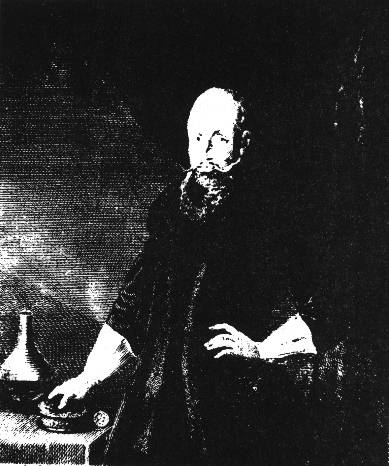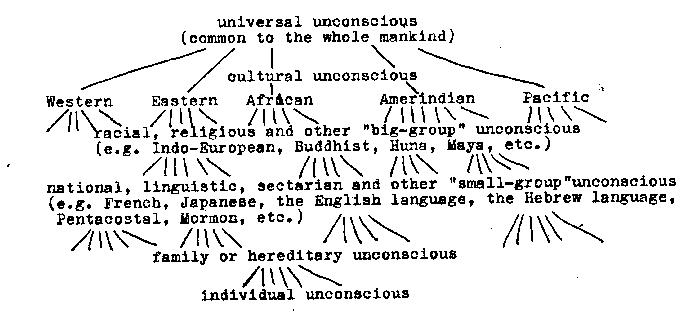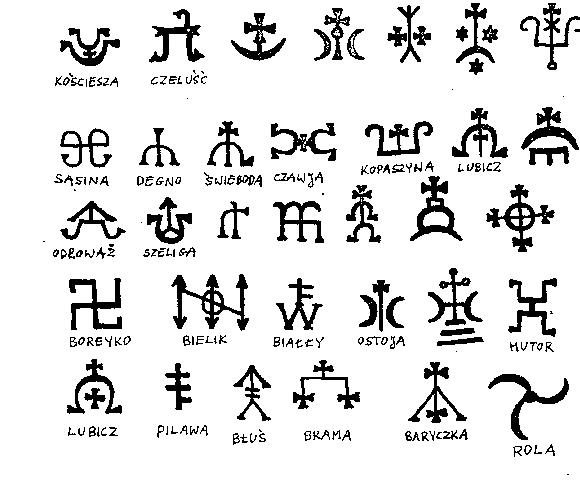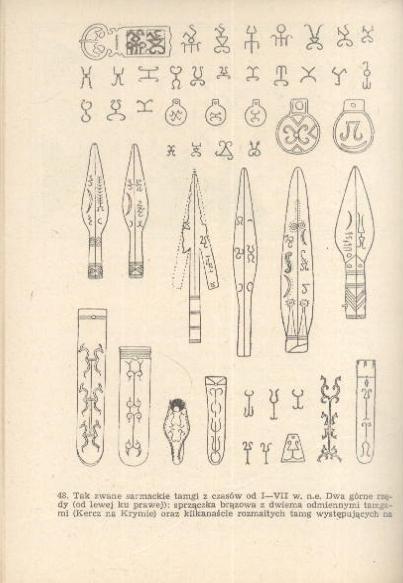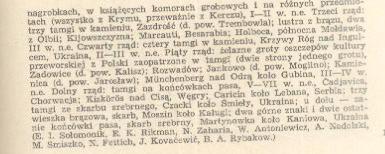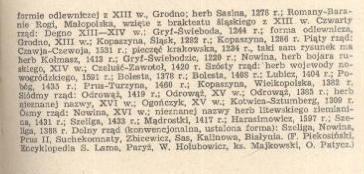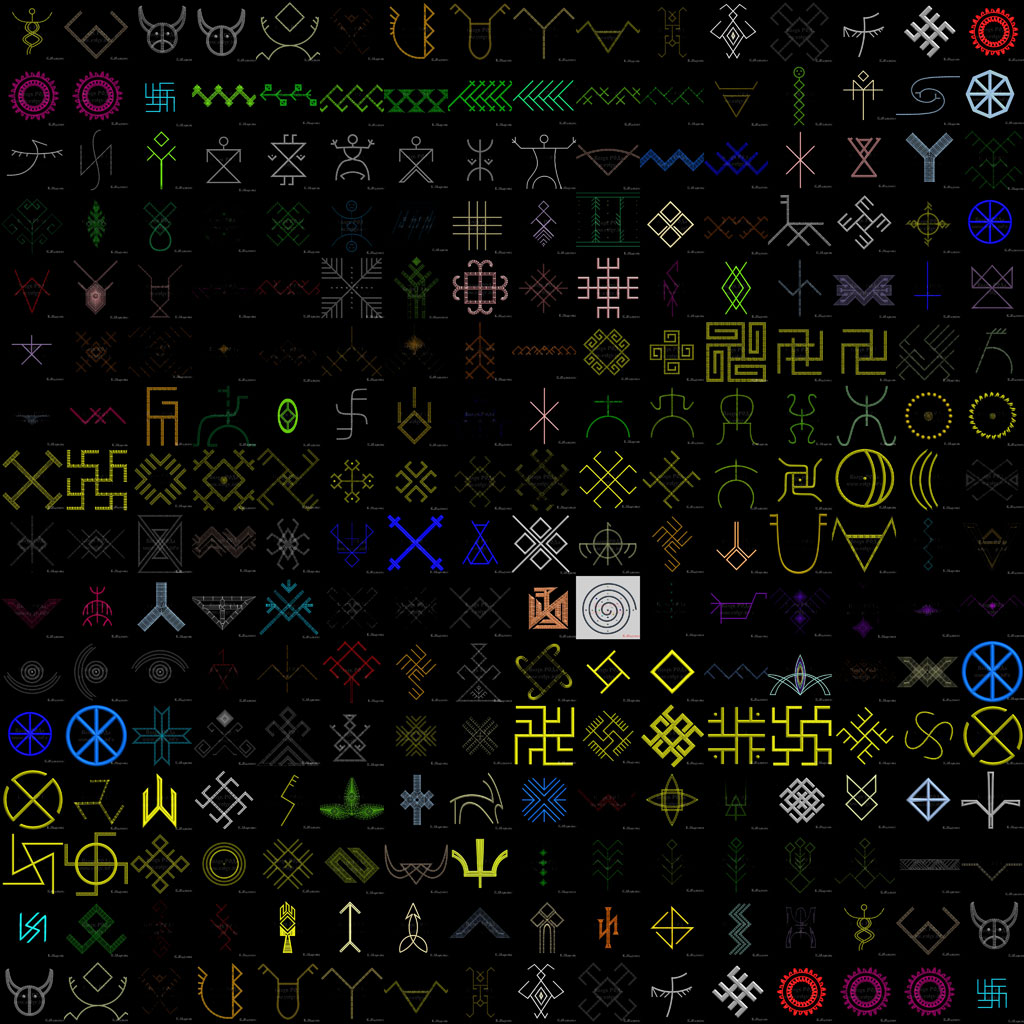Opracowanie Historii Astrologii Polskiej Rafała T. Prinke, które zamieściliśmy w tym miesiącu na naszym blogu przypomniało mi, iż jego książki Mandala Życia (t.1+t.2) stanowiły wiele lat temu podstawę moich pierwszych warsztatów astrologicznych. Łezka się w oku kręci na widok tych okładek.
Astrologia to jeden z licznych obszarów wiedzy, które musiałem poznać na tyle głęboko, żeby móc wniknąć w sens Wiary Przyrodzonej zanim jeszcze przystąpiłem do odtwarzania słowiańskiej mitologii. Pierwsze moje studia to oczywiście Weda, potem buddyzm Zen w ośrodku krakowskim w latach 70-tych XX wieku (japońska ścieżka medytacji pod wodzą Filipa Kapleau) , potem oczywiście inne Księgi Hinduizmu, joga, astrologia, tarot itp.
Tak „banalne” księgi jak Biblię (rozpowszechnianą jeszcze przez Baptystów Dnia Siódmego przy placu Axentowicza w Krakowie – obok domu moich dziadków – Kapustów i domu mojej żony i rodziny jej matki – domu Olszowskich) i Mity Greckie, Mity Rzymian, Mity Celtów znałem już od dzieciństwa w opracowaniach Gravesa, Frazera, Eliadego i innych wybitnych znawców (od 12 roku życia były to moje główne lektury).
To były jednak tylko podstawy, główny zrąb – wiedzy – stąd do wiedy i Wiedy było jeszcze bardzo bardzo daleko.
Potem zaczęły się studia archeologiczne i dziesiątki innych. Historia – oczywiście przez cały czas już od podstawówki.
Językoznawstwo, lingwistyka, psycholingwistyka i psychologia przekazu oraz systemy komunikacji społecznej były mi potrzebne jeszcze na etapie Grupy Poetyckiej Warkod – łącznie z gruntownymi studiami historii sztuki, historii literatury, w tym szczególnie nowych prądów, awangard plastycznych i literackich.[Nowe prądy w sztuce to praktycznie czas dużo wcześniejszy, opracowania Andrzeja Lama o polskiej awangardzie studiowałem w 1969 roku, zanim zacząłem mniej lub lepiej naśladować Beat Generation z USA, z jej Ginsbergiem i Kerouakiem]
Ktoś powie, że moje wykształcenie to Szkoła Filmowa w Łodzi, ale mimo że nie posiadam dyplomów z zakresu etnografii, lingwistyki, że nie mam indeksu z zaliczeniami z etymologii, czy antropologii porównawczej, a nawet błahego dyplomu polonistyki, czy jakiegoś – byle jakiego dyplomu z byle jakiego religioznawstwa na byle jakim soc-uniwersytecie polskim (co byłoby w sumie nietrudne w latach 1970-1990, kiedy najważniejszym egzaminem był ten z marksizmu-leninizmu, zwanego filozofią), albo slawistyki, czy byle jakiej socjologii – ZAPEWNIAM WAS ŻE ODBYŁEM TE NAUKI – chociaż nie po to żeby mieć dyplomy, ale po to żeby mieć niezbędną h-o-l-i-s-t-y-c-zn-ą wiedzę, która pozwoli zebrać strzępy, strzępki i strzępeczki – bo taki był stan mitologii Słowian.
Do tego doszły jeszcze konieczne nauki języków – do szkolnego rosyjskiego i niemieckiego trzeba było dodać angielski, i wszystkie inne języki słowiańskie – łącznie ze strzępkami drzewiańskiego, łużyckim dolnym i górnym, gwarami wołoskimi, itp. Oczywiście nie mówię o podstawach greki i łaciny – której socjalistyczna szkoła średnia ani nawet studia wyższe nie dawały i dzisiaj też nie dają.
Studia i zbieranie różnorakich materiałów do mitologii zajęły mi 30 lat.
Między innymi w miarę gruntownie – nie po mistrzowsku rzecz jasna, bo nie zamierzałem się specjalizować – poznałem też astrologię.
Dlatego przedstawiam poniższy tekst, z jednej z anglojęzycznych stron internetowych. Jest on ciekawy dla mnie samego, bo w inny sposób nawiązuje do znaków herbowych słowiańskich, tamg i run, i pozwala spojrzeć z innego punktu widzenia na herby szlachty polskiej.
Przede wszystkim jednak dowodzi ich głębokiego związku z Wiarą Przyrodzoną i jej najgłębszymi tajemnicami okultystycznymi. Musimy bowiem mieć świadomość, że znaki herbowe nie powstawały w XVIII ani XIX wieku, kiedy to świat się okultyzmem ekscytował, nie powstawały też w wieku XV ani XVI. One tworzyły się na bazie znaków rodowych, znaków granicznych, znaków własności, znaków wojowniczych, znaków garncarskich, znaków świątynnych, znaków WIARY i znaków pisma wiary (taj), przez setki jeśli nie przez tysiące lat wcześniej, zanim znalazły tę rycerską, rodzinną formę herbu. Nie muszę chyba tłumaczyć, że wiele znaków herbowych ma ewidentne pochodzenie sarmackie, scytyjskie, irańskie – czego dowodzą liczne już dzisiaj opracowania, a czemu poświęca uwagę na tym BLOGU zwłaszcza Dobrosław Wierzbowski (do którego artykułów odsyłam). C.B.
Oto ów ciekawy tekst Rafała T. Prinke – niestety, a może dobrze że po angielsku?
THE OCCULT MEANINGS BEHIND POLISH HERALDIC DEVICES
Rafal T. Prinke, Poland
The question of different traditions of magic or secret teachings is generally accepted as an important one but is seldom dealt with. Usually it is stated that all traditions lead to one and the same goal: realization of one’s Higher Self Atman, King or whatever it is called, and a division into several great traditions or paths to enlightment is then given encompassing the Western Tradition of magic, the Eastern Tradition of Yoga and similar techniques, plus sometimes the African Tradition, the Amerindian Tradition, and perhaps the Pacific Tradition. Further, more subtle divisions are used in connection with the Eastern Tradition especially but almost never appear in the Western ones. The only exception seems to be in Witchcraft, where racial and national differences are clearly displayed by Anglo-Saxon, Celtic and other traditions. Witchcraft however should be treated rather as a religion with some admixture of magic than as a branch of magic proper (as defined in SSOTBME). . One of the key concepts of all occult teachings and the region where most of the occultist’s work is performed is the Astral Plane with all its inhabitants which is nothing else but the collective unconscious of Jungian psychology with all its archetypes and atavistic memories. This collective unconscious can be seen as possesing several strata corresponding to different levels of the Astral Plane, not all of which are accessible to everyone. This may be represented diagrammatically as follows:
This „genealogical tree,’ of the unconscious is in several respects similar to the Cabalistic Tree of Life: all we have to do is to add something infinite like Ain Soph or cosmic consciousness, at the top of the diagrams and the individual consciousness at the bottom of it and we will obtain a scheme of developement from Kether (i.e, the most universal and therefor the most abstract, archetypes which lie in the remotest layers of the unconscious mind) to Malkuth (i.e. the world we live in which is our individual consciousness). Of course this scheme is not as clear and simple as the Tree of Life. In fact it is rather confused, since one’s unconscious may draw on many sources from the higher levels which are themselves interrelated and the number of elements is too great to remember. Then what is the use of this „tree” other than an intellectual (conscious) exercise?
Certainly the entities belonging exclusively to the individual unconscious are the easiest to approach as they inhabit the realms lying just beyond the threshold of consciousness. Therefore they may be comparatively easily evoked and then stripped of everything that comes from our own past experiences. What is left belongs to a higher stratum and should in turn be stripped of all that is inherited biologically and so on, until the single universal truth, which is the core of all existence is uncovered and seen in its simplicity. The final step would consist in going still further and merging with the all-pervading cosmic consciousness thus reconciling this last pair of opposites: Self and Non-self. This is somewhat similar to „working the Paths” or „climbing up” the Tree of Life as well as to the „going back” techniques of A. O. Spare.
One may also consciously accept a whole body of any single tradition and force its symbols, images, ideas, correspondences etc, into his own unconscious thus changing it actively and creating an unconscious the content of which is not as individualistic as it used to be but gradually becomes more and more similar to the group unconscious of the particular tradition. Knowing the contents of our unconscious we can utilize it better. This technique may be compared to „drawing Kether to Malkuth”
It seems obvious that the first of these techniques is applicable more to individual work because every person has a different unconscious (which is clear from the diagram) just as each one has a different horoscope. (Cf. the statement in Liber AL „Every man and every woman is a star”.) The second method is mostly though not only, for group work, and probably an obligatory one for members of occult schools and orders as they have to share at least the general structure of their unconscious.
I have sketchily discussed my little theory of the evolution of the unconscious before passing to the main subject of this article in order to show the place and importance of the national unconscious and hereditary unconscious in the constitution of the individual Microcosm. I believe that many national arms, emblems, symbols, etc., as well as those of old families contain a wealth of occult meanings and there is a number of their possible applications.
The Polish nation posseses a body of such symbols which are much older than its known history. The national colours white and red, as well as the arms of Poland, the white eagle are at once recognized as important occult symbols frequently used in alchemical imagery. Less known however and far more interesting are the coats of arms of Polish nobility.
As can be seen from some examples of these coats of arms in their earliest known forms (Table I) there is a striking resemblance to some magical sigils from medieval and later grimoires. In later times under the influence of the West European heraldry, the elements of the coats of arms were convetionalized and represented as realistic objects such as stars, swords, arrows horse shoes etc. but it is still possible to reconstruct the original forms of these signs.
A distinctive feature of Polish heraldry is that one arms could have been used by dozens and in some cases by hundreds of families, all of which were believed to be related to one another though the exact genealogical links were so remote that they were no longer remembered. In fact they preceded the formation of family names. On the other hand, families of the same name may have used different arms which was the sign that they were not related and having the same name was just a coincidence.
There are two main theories concerning the origin of these typically Polish coats of arms. Both of them are very interesting and meaningful from the occult point of view, though the first one is considered historically incorrect. They are shortly as follows:
1) The runic theory: it was developed by Prof. Piekosiziski at the end of the past century. He believed that the heraldic signs evolved from the Scandinavian runes brought to Poland by the Viking invaders who later settled in this country and became the noble class. Several books of his expounded a very elaborate system showing the way in which the coats of arms were generated from runic letters claiming for instance, that the crosses were added after adopting-the Christian religion as a sign of „sanctifying” the symbols.
2) The Sarmatian theory: ‘This is a current theory saying that the coats of arms of Polish novility developed from magical characters of the Sarmatians which were called „tamgas”. According to tradition Polish nobility were the descendants of the ancient Sarmatians, and in fact Poland was often called Sarmatia or Sauromatia. In the 19th century this traditional belief was regarded as a myth, but now it is held to be based on truth. The tamgas were magical signs the exact purpose of which is not Known. They were found on various objects of everyday use, on weapons, jewellery, etc. and were brought to Europe by the Sarmatians in the early centuries A.D, from their homeland on the Black Sea and the Caspian Sea where they bordered with the Persian Empire the land of the Magi. It is easy to see the similarity of the tamgas and the coats of arms of Polish nobility (Table II).
[Ten jeden wyboldowany fragmencik pozwolę sobie przetłumaczyć jednak bo ważny:
„…Te znaki zostały znalezione na różnych przedmiotach codziennego użytku, broni, biżuterii, itp. i zostały przywiezione do Europy przez Sarmatów w pierwszych wiekach naszej ery, z ojczyzny nad Morzem Czarnym i Morzem Kaspijskim, gdzie graniczyli z Imperium Perskim i Krainą Magów (lub jak kto woli Ziemią Trzech Króli). Łatwo jest zobaczyć podobieństwo tamg i herbów szlachty polskiej (tabela II)…”
I skomnetuję go tak: Nie zgadzam się jedynie z tezą, iż został przywieziony z rodowych ziem Scytów i Persów w okolicach I wieku n.e.
Morze Czarne , Kaukaz, Mała Azja, Azja Centralna – aż po Kamczatkę i granicę z Chinami, a także ziemie dzisiaj chińskie np. Pustynia Takla Makan i rzeki Czerczen i Tarym , okolice Jeziora Aralskiego, dzisiejszy Kazahstan a częściowo i Mongolia, a także północny Pakistan, Afganistan i Iran, północno-zachodnie Indie – to rodzime ziemie Scyto-IndoIrano-Słowian, Ludów S-I-S – Sistańczyków. Scytowie mają słowiańskie DNA z hapologrupą R1a1a1 i słowiański wygląd na PODSTAWIE REKONSTRUKCJI CZASZEK. Scytów zna już Biblia w Starym Testamencie. Scytowie i Słowianie sąsiadowali i tworzyli wspólnoty co najmniej od 20.000 lat, grubo przed epizodami z Żydami, Asyryjczykami, Medami czy Persami, znanymi ze starożytnych kronik i zapisów.
Ale o tym wszystkim Rafał T. Prinke nie mógł wiedzieć dokąd nie było wyników badań genetycznych z 2010 roku. C.B.]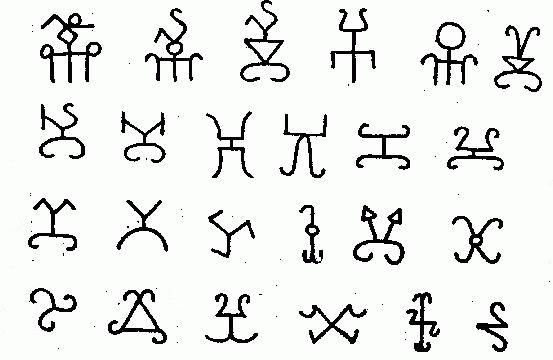
Another interesting and magically significant feature of Polish heraldry is that each coat of arms has a special word associated with it. This word is known as „zawolaniell which means „a call” or „a cry” and very often its meaning and etymology is not known.
So having a magical character (coat of arms) and a word of power („zawolanie”), it seems possible to apply traditional magical techniques in order to get in contact with the „genius” of the family or its collective unconscious. As every individual has his Holy Guardian Angel similarly every family may be said to have its „Holy Guardian Archangel”, which may be contacted in this way.
These heraldic signs may also be looked upon from a different angle. They may be considered to be sigils which used to express some kind of a desire when they were created as the emblem of the family and later the desire itself was forgotten on the conscious level activating the unconscious level. This is similar to the technique used by A.0 Spare, but on a grand scale and with the difference that the sigil itself is not forgotten only the desire is.
Besides the magically looking, typically Polish, coats of arms, Polish nobility use also a number of arms of the Western European type. These include several familiar occult symbolic figures, as for example raven, pelican, long serpent, unicorn, griffin, salamander, sphinx, etc. Of special interest may be two kinds of Caduceus, one of which is a conventional representation with the winged wand of Hermes, surmounted by a triangle of three stars, reminding us of the three Supernals (Kether, Chkmah, Binsh) of the Tree of Life. The other is a pair of black snakes and a golden elemental cross above them (incidentally its „zawolanie’ may be translated as „Golden Freedom”). There is also a Pentagram with a fleur-de-lis on its upper point. The fleur-de-lis is symbolic of the spirits and this is the elemental attribution of that point of the Pentagram. Next comes a red rose surmounted by a golden cross placed on a cross of silver feathers and finally a man opening the jaws of a lion, reminding us of a similar Major Arcanum of the Tarot.
This article does not claim to unveil the hidden wisdom known only to initiates. It simply presents some ideas which appear interesting to me and possibly may open new areas of research for occult students. If anyone has similar ideas or experiences with similar techniques as those suggested here, I would be very glad to hear about it.
♦
Tamgi z książki Sarmaci – profesora TADEUSZA SULIMIRSKIEGO
Tamgi na przedmiotach i broni
Tamgi i herby
Tamgi na kamieniu
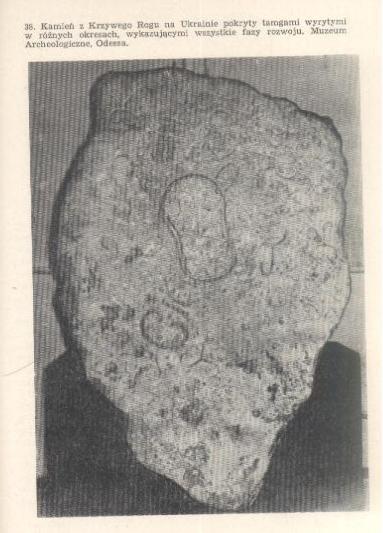 Na jednym kamieniu różne fazy rozwoju znaków
Na jednym kamieniu różne fazy rozwoju znaków
Tamgi i runy w sprzączkach ażurowych
 Tamgi w kształcie litery m i rosyjskiego h – x
Tamgi w kształcie litery m i rosyjskiego h – x
♦
Polecam też z prawdziwą przyjemnością inne teksty Rafała T. Prinke na stronie: alchemywebsite :
jak:
Rafal T. Prinke – Hermetic Heraldry
Article originally published in The Hermetic Journal, 1989, 62-78.
czy:
Rafal T. Prinke – Michael Sendivogius and Christian Rosenkreutz.
Article originally published in The Hermetic Journal, 1990, 72-98.
For later research and comprehensive presentation of Sendivogius in English see: Zbigniew Szydlo, Water which does not wet hands. The alchemy of Michael Sendivogius, London-Warsaw 1994.
Alchemia jest odgałęzieniem Arkaimskiej Wiedy tak samo jak Astrologia i Magia, a ogólnie wszystkie te dyscypliny są częścią pierwotnej Wiary Przyrodzonej tak w sensie filozoficznym jak i owocem jej praktyk i liturgii.
Na koniec, z rosyjskiej strony wołchw Roda znaki słowiańskie według tamtejszego zestawienia:
C.B.


